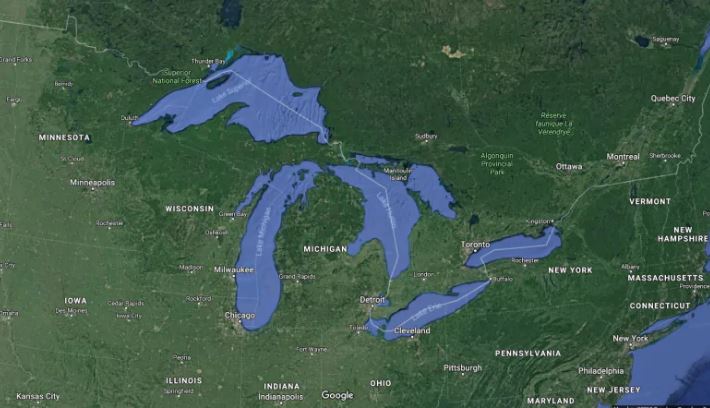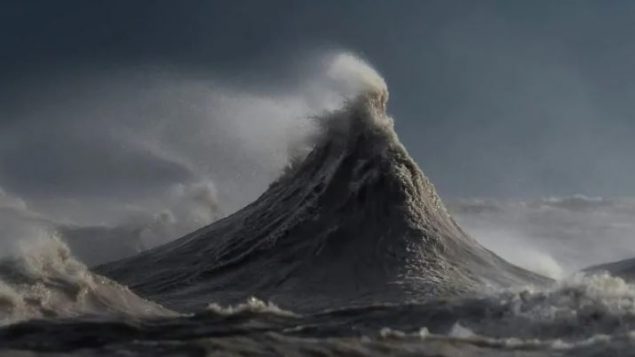The Great Lakes Surf Rescue Project (GLSRP) has tracked 102 drownings in the Great Lakes, so far in 2018.
That’s 14 more than the 88 people who drowned last year, according to the group that got organized back in 2010.
“Cold plays a big part in a lot of the drownings that we have, cold water incapacitates people”
Bob Pratt, a former firefighter and paramedic, is the Executive Director of Education for the GLSRP. He says he loves the water, he kayaks, windsurfs and surfs, surfing even in the winter.
“Cold plays a big part in a lot of the drownings that we have, cold water incapacitates people, and they don’t realize that you can be a great swimmer in a pool, but the pool’s always flat and the pool’s always warm, it’s always 25 metres from one side of the pool to the other, when you go out into Lake Ontario or Lake Erie, the water can be very cold, it can be very rough and it’s a completely different experience and you need a different skill set.
ListenPratt says the increase in drownings this year may be a result of the warmer summer weather.
The warm air brings more people to the beach, but the warm air can bring the wind that creates rougher waves which many people may not be accustomed to.
“The truth is that drowning will kill more people than fire, lightening, tornadoes, school shooters and earthquakes combined”
Pratt says Canada’s Lifesaving Society does great work teaching children with initiatives such as the Water Smart Program and the Swim to Survive Program

In the United States, he says, Americans do drills in preparation for a variety of emergencies, from fires and earthquakes to tornadoes and active shooter drills.
“The truth is that drowning will kill more people than fire, lightening, tornadoes, school shooters and earthquakes combined”.
He says in the United States there’s very little water safety education, a gap the GLSRP is trying to fill.
“We call them lakes, but they’re far more like inland seas than they are lakes.”
From talking to children about pool safety and life jackets and the need to stay close to their parents, to informing high school and college students about the risks involved in jumping off a pier, for example, the programs targeted to every level.
When it comes to the teen age demographic, Pratt says it’s about helping them “make safer bad choices”!
Jumping feet-first is better than head-first, and knowing the temperature of the water can make a big difference in surviving a bad experience.
Bob Pratt says so-called “common sense” doesn’t necessarily apply in the Great Lakes. “We call them lakes, but they’re far more like inland seas than they are lakes.” he says, as many of us who live near them know. You can’t see to the shoreline on the other side.
Getting caught in a rip current for example would lead one to continue to try to swim or struggle against it. He says the safe move goes counter to common sense, which is to swim farther away and then try to return to shore.
The same goes for sand-bars, very common off the beaches of southern Georgian Bay. One can walk into the water waste-deep, only to then find yourself knee-deep, but only a few more metres and the depth could drop to well over your head. Watching from the shoreline, one can’t tell what the depths may be.
Flip, Float and Follow
Bob Pratt says they teach a simple technique with the catchy mantra, Flip, float and follow.
“If you find yourself in trouble in the water, flip over on your back, float to calm yourself down, float to conserve your energy, and then follow a safe path back to shore.” he says.
The understanding of the dynamics of the Great Lakes has come a long way in the last thirty years.
Bob Pratt credits Dave Gunther, a meteorologist with the U.S. Weather Service, who was suggesting as a result of his observations, that there were rip currents in the Great Lakes. He was ridiculed at the time, but has since been proven right, and sadly after so many deaths.
289 people drowned since the Great Lakes Surf Rescue Project began keeping statistics in 2010. Bob Pratt says 12 of them were wearing life jackets. Many of the other 277 may have been saved had they been wearing them. The life jacket is essential and must be worn on the lakes, not just kept in the boat, or tied to the board.
Drowning: a silent death
“Everything from Sponge Bob Square Pants to the old TV show, Baywatch, shows drowning as a big, loud, long affair, with people waving and yelling, but a drowning victim can’t lift their arms up to wave or they’ll sink deeper into the water and most of the time they’re choking or gagging on the water, so they’re unable to yell.” Pratt says.
“Most drowning victims stay at the surface of the water for only about 15 to 45 seconds, and lifeguards call it climbing the ladder; they have their head back and mouth open because it givers them a little bit of breathing space, and they’re desperately trying, pawing at the water in kind-of a stationary dog-paddle, in order to try keep their head above the surface of the water.”
It’s not like they show in Hollywood, and parents and care-givers need to watch people in the water all the time, whether you’re at a backyard pool or whether you’re at the beach in Toronto.
(With files from CBC)
“Respect the Power” is a program started by the mother of Andy Fox,







For reasons beyond our control, and for an undetermined period of time, our comment section is now closed. However, our social networks remain open to your contributions.